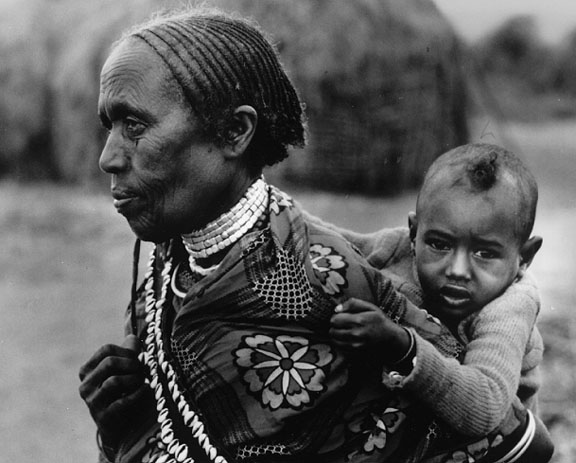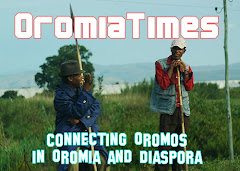NAIROBI, 14 June (IRIN) - Tragic Cargo, Part Two: This is the second part of a two-part Special Report by IRIN on the Somali and Ethiopian migrants who undertake a treacherous journey in small fishing boats from the tip of the Horn of Africa to the Arabian peninsula NAIROBI, 9 June (IRIN) - Raho Rasoni's home is made of sticks, cardboard and scraps of faded material. It is a poor shelter against the seasonal sandstorms and gales that rip through Shabelle camp on the outskirts of Bosasso, a busy commercial port in northeastern Somalia. Raho, 30, lives in the camp with her seven children. "Most of my life I have been displaced, and I expect it to remain that way," she says. Her parents fled conflict in their native Hiiran region in central Somalia to Ethiopia, where Raho was born. The family returned to Hiiran when Raho was about seven years old and settled, but when civil war erupted in 1991, they fled to Mogadishu, the Somali capital, until fighting there, too, forced them out. Like thousands of other Somalis, Raho came to Bosasso hoping to find work at the port or leave Somalia. Instead, she has been here doing menial labour for more than two years. She sweeps and cleans in a restaurant, earning about 30,000 Somali shillings (US$2) a day. Stranded in Bosasso About 34,000 displaced people live in shelters on the periphery of Bosasso. According to a May 2005 survey by the United Nations Development Programme (UNDP) and a local organisation, the Somali Reunification Women's Union (SRWU), about 30 percent of the displaced are from Mogadishu; the rest are mainly from southern Somalia. With relative stability, there has been a commercial boom in the port over the last few years, attracting an increased number of would-be migrants and displaced people. Somali migrants who cannot cross the Gulf of Aden to Yemen move into the camps or settle with relatives and friends in the heart of the town. More recently, thousands of Ethiopians have arrived, too. In November 2005, a UN team did an assessment of the stranded migrants after some Ethiopians died on the streets of Bosasso. As a result, the UN World Food Programme, the Danish Refugee Council and SRWU set up five feeding sites for 2,500 Ethiopians. According to SRWU's Abdulahai Haji, food is supplied "as a lifesaving measure", and the number of recipients is sometimes as high as 4,000. In contrast, Somali migrants live in camps for the internally displaced, but find their search for a better life has hit a dead end. Landlords charge rent even for tiny, rudimentary shelters and force many people to share a small amount of space. Raho pays 40,000 Somali shillings (about $3) a month to her landlord, who also charges for the use of latrines. Many women choose to pay to use latrines at night because of the threat of rape and harassment. The more remote the camp, the more vulnerable its population is to theft, gangs, lootings and rape. When she can, Raho uses her earnings to send her children to school. However, she can rarely afford to do so. According to the survey, most children in the camps have had no education. About 70 percent have attended a 'madrassa', or Islamic school, at some point, but most still cannot read or write. Half the displaced eat only one meal a day, and almost all families resort to traditional treatments when they become sick. Raho believes she will never go home. She has seven children between the ages of 2 to 14 years, and sets her sights only on where she can earn money. "I can give my children a home here," she says, "for now." Society's burden Bosasso is located in the semiautonomous region of Puntland, at the northeastern tip of the Horn of Africa. Puntland has been quite stable politically, but local humanitarian workers have warned that it is economically vulnerable, due to the effects of war and recurrent droughts. Before the most recent influx of migrants from southern Somalia and Ethiopia, Bosasso was already home to ranks of displaced pastoralists and fishermen - who had either lost herds of livestock to drought or their fishing livelihoods to the 2004 tsunami. The local Somali population is mainly dependent on livestock, which has been decimated by a number of factors, including environmental desertification. Charcoal exports have become a major trade, exacting a serious environmental toll. Livestock exports, once critical to the regional economy, have been dramatically cut since 1991, when Saudi Arabia banned the import of Somali livestock because of inadequate inspection in Somalia to detect Rift Valley fever. In the 15 years of civil strife in Somalia, migration has typified life in a country that considers itself abandoned by the international community. The concentration of displaced people in Bosasso is testimony to the hopelessness felt throughout southern Somalia, where communities live without either governmental or humanitarian assistance. Aid agencies estimate there are more than 350,000 internally displaced people in Somalia. Since the collapse of central government in 1991, many have fled southern Somalia, where warlords have fought over and even taken control of the most fertile land between two key rivers, the Juba and Shabelle. Disputes also centre on areas near key southern ports, such as Mogadishu, Merka and Kismayo. The 15-year Somali conflict has been particularly disastrous for minority clans from fertile regions, who now account for most of the permanently displaced population in the Bosasso camps.
Subscribe to:
Post Comments (Atom)



1 comment:
Purchasing a promise ring is easy in case you know what you are searching for.
Having personal contacts with the jeweler is extremely important in case you need to resize or
modify the ring. These hearts symbolize true love and liking for the soul mate.
Feel free to surf to my website: web page
Post a Comment